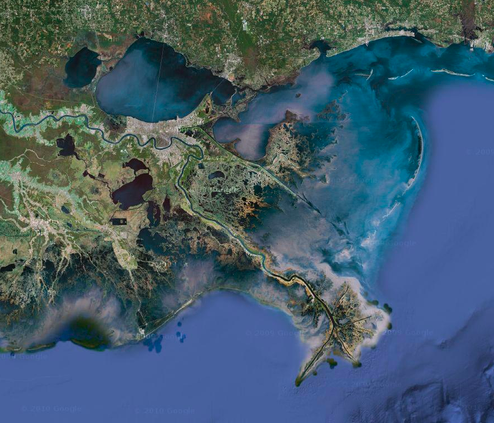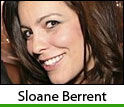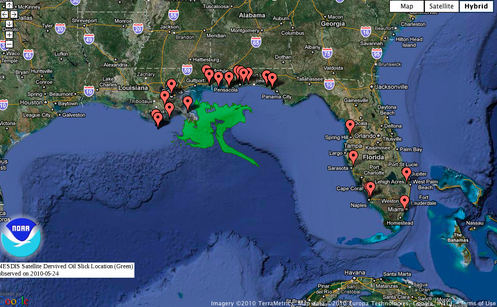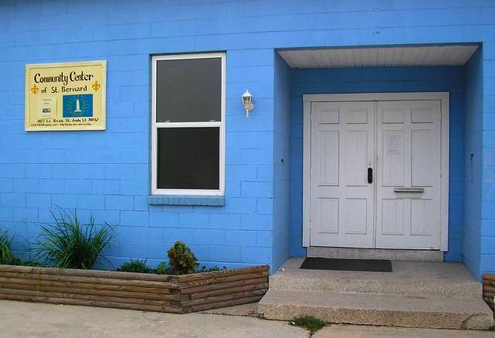
Chandeleur Islands Balloon Aerial Imagery from Grassroots Mapping
Ways to get involved & new technologies being used to stop and track the disaster
 President Obama addressed the nation last night and made a stop in the Gulf Coast region this week to survey the damage and relief efforts. As local residents already know, the environmental and economic impacts are far greater than anyone could fathom or dare imagine.
President Obama addressed the nation last night and made a stop in the Gulf Coast region this week to survey the damage and relief efforts. As local residents already know, the environmental and economic impacts are far greater than anyone could fathom or dare imagine.
The “Crude Awakening,” as it’s been called, is causing a lifetime of damage to the Gulf Coast, spurring over 45 rallies nationwide to demand BP step up and take responsibility for its actions and that the government pass stricter regulations on offshore drilling. The Deepwater Horizon explosion occurred on April 20, and crude oil continues to spill into the Gulf Coast region.
In the mayhem and despair, citizens and activists are in a constant state of emergency and disaster mode. Anne Rolfes, Founding Director of the Louisiana Bucket Brigade, told me, “Our office is bombarded every day by phone calls and people who walk through the door wanting to help in the face of this impossible situation. We are putting them to work to document the problem – gathering data, making the people-to-people connections that will help the real story be told. When the spill stops, BP has a public relations machine ready to minimize this and pretend it didn’t happen. We don’t have a machine but we have something better – real people who are passionate and determined.”
This time of year marks another important date for the Gulf Coast region. It’s the official start of hurricane season. With wetlands and marshes already under attack, meteorologists and hurricane experts warn this year’s hurricane season is more dangerous than ever. Imagine cities not only suffering water damage but covered in oil.
It’s hard not to be despondent, and worse, not know what you can do to help. Listed below are organizations making a difference and bringing together technologies being used to stop the oil spill from spreading and tracking the spill, providing a dataset open to the public.
Consider supporting these organizations and finding a way to get involved.
Grassroots Mapping
Grassroots Mapping, a creation of Jeffrey Warren from MIT Media Lab’s Center for Future Civic Media, is producing imagery created by volunteers and owned in the public domain. By using balloons and kites equipped with inexpensive digital cameras, these “community satellites” are able to georeference and create maps with 100x higher resolution than what is available on Google to be used in the environmental battle and litigation proceedings in the coming years. Orientation sessions are being offered in New Orleans and a DIY wiki is available on their website.
What you can do: Grassroots Mapping is currently running a Kickstarter project to raise money for more kites and helium tanks to put in the hands of volunteers in New Orleans. They are looking to raise $5,000 in the next 20 days. A donation of $10 or more gets you a print of any photo in their public domain dataset.
Matter of Trust
Matter of Trust – When hair can mean more than hair. Salons all over the country, and internationally from countries including the UK, France, Germany, New Zealand, Japan and Brazil, have been taking hair to drop-off points or sending discarded piles of hair to Matter of Trust to make booms by stuffing hair, fur, wastewool and other applicable material into the donated recycled nylons and mesh to absorb oil and stop the spill from spreading.
What you can do: Donations aren’t coming only from “people” salons but from pet groomers, and farmers sheering alpaca and llamas. The most recent call to action? Nylons. You can send nylons new or used (with runs) to their warehouses to help make booms. There are over 2,600 oil spills every year, so this otherwise discarded waste will continue to have a usage for other spills. Sign up here to get involved or make a donation.
Oil Reporter

Real time reports from Oil Reporter
Oil Reporter – The folks from CrisisCommons and Ushahidi (and scores of volunteers) have created free iPhone and Android applications that enables citizens on the ground to upload photos and videos and notes to report sightings of oil, harmed wildlife and conditions of the wetlands and beaches. Oil Reporter data is open and available to anyone via its open API. A team from San Diego State University’s Visualization Center will be the data repository for Oil Reporter. Oil Reporter will be hosting an Adopt-A-Beach initiative for virtual volunteers to adopt a span of beach along the Gulf Coast.
What you can do: Through the use of high resolution imagery, volunteers will be provided a specific location and training to map data elements of what they see such as perimeters of oil presence and injured wildlife in remote areas where physical assessment access is limited. Details and dates are being announced later this week.
Community Center of St. Bernard

Image courtesy of the Community Center of St. Bernard
Community Center of St. Bernard – St. Bernard Parish was overshadowed by the mass media post-Hurricane Katrina for the Ninth Ward. A working class community, only 2 homes in St. Bernard were not affected during Katrina. Many of these families still haven’t been able to return to their homes, almost five years after Katrina and are still struggling with debt and repaying their SBA loans, yet this community is being hit again by the oil spill. Commercial and recreational fishing bans are currently in effect, and as many of these residents rely on the fish and seafood industries, they are now being forced to sign up for food at the food pantry so that they will be able to feed their families until they can find other work.
What you can do: Donations go towards food, clothing and services for families in need.
Other ways to get involved
A recent Gulf Aid concert in New Orleans on May 16 raised over $300,000 for families in need and included performances by Lenny Kravitz, John Legend, Ani Difranco, Allen Toussaint, The Voice of the Wetlands All-Stars and The Preservation Hall Jazz Band with Mos Def. Donations are still being taken through the Gulf Relief Foundation or you can text “GULFAID 10” to 27138 to donate $10 to Gulf Aid.
There are discussions that another series of concerts will be held on July 1st with all proceeds benefiting Gulf Coast families. If you’d like to be involved or create a fundraiser of your own, it’s easier than you think. Identify an organization to direct your donation and contact them. The first point of contact is sometimes all we need to get started.
Don’t know where to start? Leave a comment below and we’ll help you. This is too important for us all not to jump in and find a way to contribute.
Editor’s note: This post originally was posted on Pop Tech with the byline: Sloane Berrent currently resides in New Orleans. She co-founded NOLAlicious, a weekly e-newsletter about New Orleans and organized the first CrisisCampNOLA.
Related
Sloane Berrent is a cause-based marketing consultant who works with nonprofits and social cause organizations. See her business profile, contact Sloane or leave a comment.
 This work is licensed under a Creative Commons Attribution-NonCommercial-ShareAlike 3.0 Unported.
This work is licensed under a Creative Commons Attribution-NonCommercial-ShareAlike 3.0 Unported.








